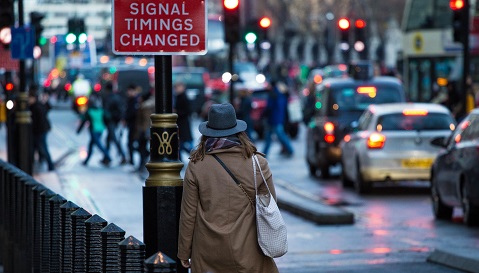Project to analyse microplastic pollution in cities

New UAB crowdfunding campaign to develop a simple sampling methodology for urban areas.
28/10/2022
Cities are the main source of the more than 24 trillion microplastics floating on the surface of our oceans, and it is estimated that urban centres might accumulate up to more than 700 microplastic per square metre and per day. However, the lack of concrete studies does not allow an accurate understanding of the presence of these pollutants in the urban environment due to the practical difficulty and high economic cost of sampling, identifying, and quantifying these substances.
With the aim of providing detailed information on the presence of these microparticles in cities, researchers from the Institute of Environmental Science and Technology at the Universitat Autònoma de Barcelona (ICTA-UAB) and the Cartographic and Geological Institute of Catalonia (ICGC) have launched the Plasticker project. Thanks to the support of the UAB Research Park through its 12th Ideas Generation Programme, scientists have developed a simple and economical sampling method: a 100% biodegradable adhesive that, when stuck to an urban surface such as sidewalks, street furniture or playgrounds, collects the particles lying on them. In this way, and by analysing these samples in the laboratory, it will be possible to characterise and quantify of microplastics present in cities.
"Although the main route for these pollutants to reach the marine environment are rivers, they find their origin in urban centres due to high-density anthropogenic activities", recalls Michaël Grelaud, ICTA-UAB researcher, who explains that each inhabitant directly or indirectly releases about 2.5 kg of microplastics per year into the environment. These microplastics come mainly from tyre abrasion (50.5%) and from plastic on road surfaces (9.4%), followed by plastic pellets (7.4%), transport and waste treatment (6.8%), abrasion of sports surfaces (5.3%), construction, shoes abrasion, plastic packaging, road paint and the friction of textiles in washing machines.
Constant exposure to this pollution also poses a potential risk to human health. "Microplastics can interact with the human body through three main routes: inhalation, ingestion and skin contact. Several studies have already shown that microplastics were able to cause serious impacts on human health including physical stress and damage, inflammation, or immune responses", explains Andrea Vidal Durà, currently soil technician at the ICGC.
For researchers, knowing the origin and concentrations of microplastics in our daily spaces is essential to decide how to deal with this pollution problem that directly affects the health of people and ecosystems. Therefore, the development of the Plasticker methodology is a step forward in reducing such pollution and creating more sustainable spaces that are free of microplastics. "The aim is for cities to become spaces where we can touch, breathe and eat without being exposed to this invisible pollution," explains Grelaud.
To develop this initiative, the UAB has launched a crowdfunding campaign Plasticker: the urban microplastic tracker through which it aims to raise 10,000 euros for the development of the materials and methodology, as well as for the start of the sampling and subsequent analysis phase in the laboratory.
Website of the campaign "Plasticker: the urban microplastic tracker" https://micromecenatge.uab.cat/microplasticsensuperficies